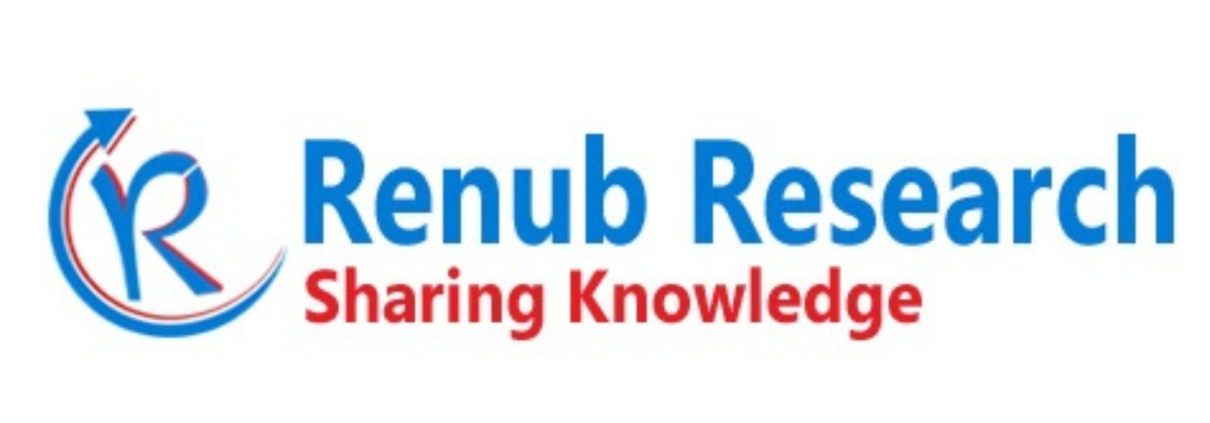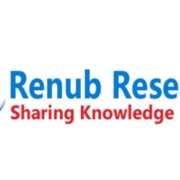Asia Pacific LiDAR Market to Skyrocket to $4.81B by 2033
Asia Pacific LIDAR Market Analysis
The Asia Pacific LIDAR (Light Detection and Ranging) market has experienced significant growth in recent years, driven by technological advancements, rising demand across multiple industries, and government initiatives promoting smart infrastructure and autonomous mobility. In 2024, the market was valued at USD 791.41 million and is projected to reach USD 4,808.84 million by 2033, representing a CAGR of 22.2% from 2025 to 2033. This rapid growth reflects the increasing adoption of LIDAR in autonomous vehicles, infrastructure construction, environmental monitoring, and various industrial applications across the region.
Full Access Report:https://www.renub.com/asia-pacific-lidar-market-p.php
Asia Pacific LIDAR Market Overview
LIDAR is a remote sensing technology that measures distances by emitting laser pulses and analyzing the time it takes for the reflections to return from surfaces. This enables high-precision three-dimensional mapping and modeling, essential for applications requiring accurate spatial data. Unlike traditional methods, LIDAR delivers real-time, high-resolution data, making it indispensable for sectors such as automotive, construction, environmental monitoring, and agriculture.
In Asia Pacific, the adoption of LIDAR is rapidly expanding due to its utility in autonomous vehicle navigation, infrastructure planning, disaster management, and agricultural optimization. Countries like China, Japan, India, and South Korea are actively incorporating LIDAR into smart urban projects, self-driving vehicle initiatives, and geospatial information systems. Its ability to provide accurate and immediate insights makes LIDAR a strategic technology for both public and private sectors.
Key Growth Drivers
Rising Adoption of Autonomous Vehicles
The automotive sector is a primary driver for LIDAR deployment in Asia Pacific. Autonomous and connected vehicles rely heavily on LIDAR sensors for real-time detection of obstacles and precise navigation. Leading countries, including China, Japan, and South Korea, are investing heavily in self-driving technology, collaborating with LIDAR manufacturers to integrate advanced sensors into next-generation vehicles. Governments are actively promoting intelligent transport systems and smart mobility solutions, reinforcing LIDAR’s importance in ensuring safety, reliability, and efficiency in autonomous transportation.
A notable example is Hesai Technology, which announced in April 2025 that its LIDAR solution would power WeRide’s autonomous vehicles on Uber’s platform in Dubai, supporting the city’s 2030 smart mobility plan. This milestone highlights the growing global influence of Asia Pacific LIDAR technologies.
Smart City Initiatives
The urbanization trend and smart city initiatives are another crucial growth driver. Governments across the region are deploying LIDAR for 3D city modeling, structural health monitoring, traffic management, and urban planning. In countries like India and Singapore, public-private partnerships are fostering smart infrastructure projects reliant on geospatial intelligence powered by LIDAR technology. Such initiatives enhance urban efficiency, safety, and sustainability, significantly boosting LIDAR adoption.
In January 2025, CSCEC inaugurated the Advanced Attosecond Laser Infrastructure in Dongguan and Xi’an, China. Spanning 38,000 square meters, the facility supports high-precision research in physics, chemistry, and materials science, illustrating the broader potential of laser-based technologies including LIDAR for urban and scientific applications.
Environmental and Agricultural Applications
LIDAR is increasingly leveraged for environmental monitoring, disaster management, forestry, and precision agriculture. Governments and research institutions employ it for flood modeling, forest canopy mapping, coastline monitoring, and climate data collection. In agriculture, LIDAR assists with crop health assessment, field mapping, and irrigation optimization, supporting sustainable farming practices. Countries like Australia and China are investing heavily in climate and land-use monitoring, where LIDAR’s high-resolution spatial data is invaluable.
A strategic development occurred in September 2023 when Terra Drone Corporation acquired Avirtech, a startup providing agricultural drone spraying and mapping services in Southeast Asia, highlighting LIDAR’s integration into modern precision farming practices.
👉 Want to explore detailed market trends, segment insights, and forecasts? 🔗 Request Sample Report:https://www.renub.com/request-sample-page.php?gturl=asia-pacific-lidar-market-p.php
Market Challenges
High Equipment and Deployment Costs
Despite its benefits, LIDAR adoption is constrained by high costs associated with hardware, including lasers, sensors, GPS modules, and MEMS components. Integration, installation, and data-processing costs further limit deployment, particularly for small businesses or public agencies. While ongoing technological innovation is gradually reducing expenses, affordability remains a barrier to widespread adoption, especially outside the automotive sector.
Regulatory and Technical Limitations
LIDAR deployment faces regulatory and operational challenges. Inconsistent drone and sensor regulations across countries can delay projects. Additionally, adverse weather conditions like heavy rain or fog reduce LIDAR accuracy. Limited availability of skilled personnel and data processing infrastructure in some areas also hampers full-scale adoption, making regulatory alignment and technical enhancements critical for growth.
Segment Analysis
By Type
- Terrestrial LIDAR: Widely used in construction, mining, and forestry for terrain modeling, structural inspections, and archaeological mapping. Its portability and precision make it ideal for ground-based surveys in challenging terrain.
- Aerial LIDAR: Supports large-scale topography, infrastructure mapping, and environmental monitoring, commonly deployed via drones or aircraft.
- Mobile LIDAR: Integrated with vehicles for roadway and urban mapping, enabling real-time data collection for transportation planning.
- Short Range LIDAR: Applied in robotics, autonomous navigation, and industrial automation requiring close-range, high-accuracy detection.
By Components
- LASER: Core component for precise distance measurement; dominant in transportation, defense, and aerospace sectors.
- Inertial Navigation Systems (INS): Enhance LIDAR positional accuracy.
- Cameras: Supplement LIDAR for visual imaging and object recognition.
- GPS/GNSS Receivers: Provide geolocation data.
- MEMS (Micro Electro Mechanical Systems): Miniaturized sensors enabling compact and cost-effective LIDAR devices.
By Application
- Corridor Mapping: Essential for highways, pipelines, and power line projects, enabling accurate mapping of linear infrastructure.
- Engineering & Construction: Supports terrain analysis, building inspection, and structural modeling.
- Environmental Monitoring: Enables forest, flood, and coastline management.
- Exploration: Applied in mining, oil, and geospatial surveying.
- Advanced Driver Assistance Systems (ADAS): Powers autonomous vehicle navigation and obstacle detection.
- Others: Includes robotics, defense, and immersive simulation applications.
By Technology
- 3D LIDAR: Provides point cloud data for high-precision mapping, critical in city planning, defense, and AR/VR applications.
- 2D & 1D LIDAR: Suitable for robotic navigation and industrial automation.
By Range
- Short Range: Typically <50 meters, used in robotics and vehicle proximity sensing.
- Medium Range: 50–200 meters, balances resolution and distance for industrial and agricultural applications.
- Long Range: >200 meters, essential for autonomous vehicles, aerial mapping, and surveillance.
Country-wise Analysis
- China: Largest market due to autonomous vehicles, infrastructure projects, and domestic production of LIDAR components. Initiatives like Leapmotor’s B10 SUV with LiDAR highlight affordability trends.
- Japan: Strong in high-tech automotive, robotics, and disaster management, with OEMs like Toyota and Honda leading adoption.
- India: Growth driven by smart city projects, infrastructure modernization, and agricultural digitization. Startups enhance affordability and range of applications.
- South Korea: Focused on automotive technology, robotics, 5G, and intelligent logistics, supporting advanced LIDAR deployment.
- Australia: Adoption fueled by environmental monitoring, mining, and precision agriculture.
Other notable markets include Thailand, Malaysia, Indonesia, New Zealand, and the rest of Asia Pacific, which are gradually expanding adoption for infrastructure, environmental, and industrial applications.
👉 For deeper analysis, detailed segment data, and company insights: 🔗 Request Customization Report:https://www.renub.com/request-customization-page.php?gturl=asia-pacific-lidar-market-p.php
Competitive Landscape
Major companies operating in the Asia Pacific LIDAR market include:
- Faro Technologies Inc.
- Teledyne Technologies Inc.
- Hexagon AB
- Vaisala Oyj
- Innoviz Technologies Ltd.
- Denso Corporation
- Hesai Technology
- Benewake
These companies are focusing on R&D, partnerships, product innovations, and cost reduction to capture the growing regional demand.
Conclusion
The Asia Pacific LIDAR market is poised for robust growth from 2025 to 2033. With a projected CAGR of 22.2%, the market is increasingly being shaped by autonomous vehicles, smart city initiatives, environmental monitoring, and advanced industrial applications. Despite challenges like high equipment costs and regulatory hurdles, technological advancements, government initiatives, and growing awareness of LIDAR’s benefits are fueling adoption across the region. Countries like China, Japan, India, and South Korea are emerging as key hubs for innovation, production, and deployment of LIDAR solutions, setting the stage for a technologically advanced and sustainable future.
Note: If you need details, data, or insights not covered in this report, we are glad to assist. Through our customization service, we will collect and deliver the information you require, tailored to your specific needs. Share your requirements with us, and we will update the report to align with your expectations.



Leave a Reply
Want to join the discussion?Feel free to contribute!